
Purpose The purpose of this study was to conduct the impact of technology acceptance model(TAM) in sports field using a meta-analysis. Methods First of all, findings from 22 articles were used to analyze the relationship between perceived usefulness, perceived ease of use and intention to use via the comprehensive meta analysis(CMA) program. Results Its study results are as follows: First, results showed that TAM have a big effect on intention to use, with an effect size of .537. Second, the most influential effect size of TAM sub-factors was perceived usefulness. Third, in application and SNS had a most effect on TAM. Lastly, results found significant moderating evidence for ratio of female. But ratio of 20’s was not founded significant moderating evidence. Conclusion Based on the results of this study, it will be possible to pursue the behavior of the audience in the field where TAM is applicable in sports field.


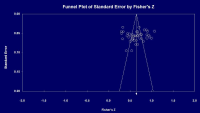


PURPOSE The purpose of this study was to analyze the effect size of the unified theory of acceptance and use of technology (UTAUT) in the sports field using a meta-analysis. METHODS After identifying related studies by using RISS, 22 articles were selected and used to analyze the relationship between UTAUT sub-factors (performance expectancy [PE], effort expectancy [EE], social influence [SI], and facilitating conditions [FC]) and intention to use via the comprehensive meta-analysis program. RESULTS The results are as follows: First, the effect size between PE and intention to use was 0.521. Second, the effect size between FC and intention to use was 0.514. Third, the effect size between EE and intention to use was 0.500. Finally, the effect size between SI and intention to use was 0.475. CONCLUSIONS Diverse strategies can be derived to increase consumers' intention to use in the sports field using the UTAUT model.
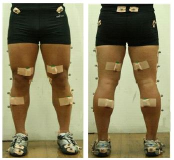
The purpose of this research is to investigate the factors affecting the performance capability of lunge movements by performing lunge movements which are commonly used as a method of instant physical movement in sports with a kinetic analysis including an EMG analysis. This research targeted 14 skilled fencers and made the subjects perform kick-lunges which allow them to go farthest from their positions and performed an analysis on such, applying a 3D motion analysis system and an EMG system. The subjects performed kick-lunges in two movements; one with a preliminary movement and the other without it and those are performed with both dominant leg and non-dominant leg. The result of this research is as follows. The lunges with a preliminary movement showed higher performance capability than those without it. Furthermore, as the level of skills gets higher, the length of lunges gets longer, and it seemed that a tactical mechanism shortening exercise performance times was used as a mechanism to control the impulse coming from such lengthened lunges. In addition, a difference appeared in mechanical factors such as moment and power in a dominant leg movement and it seemed to result from a difference in an functional capability using muscles.


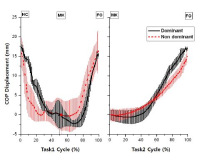


PURPOSE This systematic review and meta-analysis aimed to assess the effectiveness of exercise programs in improving physical fitness among middle-aged adults in Korea. METHODS A literature search was conducted using KCI-registered databases on DBpia, RISS, and KISS up to September 21, 2023. The review followed the PICOSD framework (population: middle-aged adults; intervention: exercise program; comparison: did not participate in exercise program; outcome: physical fitness; study design: randomized controlled trials). Two researchers independently evaluated bias using the Cochrane Risk of Bias tool for randomized trials (RoB 2). The data was synthesized using the CMA 3.0 program, applying a random effects model to estimate the overall effect size using Hedges’g. RESULTS Out of 914 screened documents, 15 studies were selected, comprising 405 participants. The overall effect size for improving physical fitness was significant (g=0.994, 95% CI: 0.712–1.276). Sub-analysis indicated significant improvements in various components, including muscle strength (g=1.295, 95% CI: 0.909-1.682), muscular endurance (g=0.972, 95% CI: 0.637-1.308), cardiorespiratory endurance (g=1.092, 95% CI: 0.453–1.731), flexibility (g=0.883, 95% CI: 0.555–1.210), muscle power (g=1.421, 95% CI: 0.656– 2.186), and agility (g=1.854, 95% CI: 0.347–3.361) compared to the control group. An additional analysis focusing solely on women revealed a slight increase in effect size, although the order of effect sizes remained consistent across fitness components. CONCLUSIONS This meta-analysis confirms the effectiveness of exercise programs in enhancing physical fitness in middle-aged adults. The systematic review also highlights key considerations for designing exercise programs for this demographic. Future studies should aim to minimize bias and enhance the quality of reporting to ensure more robust results.

This study examined whether or not regulatory focus can predict motivation level. 141 Ssireum player completed Korean self-regulatory focus of Hong(2005)assessing their self-regulatory focus, and Behavioral Regulation in Sport Questionnaire(BRSQ) of Lonsdale, Hodge & Rose(2008) accessing motivation level based on self-determination theory. Artificial neural network analysis was utilized to find motivation factors that determine the regulatory focus, and the option was multi-layer perception. The result represented promotion focus predicted intrinsic motivation. Also, the prevention focus predicted extrinsic motivation. This result provided that self-regulatory focus can predict player’s motivation level and promotion focus related to intrinsic motivation.


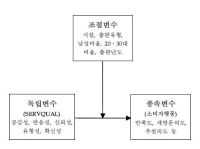
The current study aimed to investigate the impact of SERVQUAL on sport consumer behaviors using meta-analytic techniques. Findings from 25 dissertations and 26 journal articles were used to test of a model of the SERVQUAL on various sport consumer behaviors via the comprehensive meta analysis (CMA) program. Results showed that SERVQUAL has a large effect on sport consumer behaviors, with a fixed effect size of .383. In terms of the relative importance of the SERVQUAL sub-factors, sport consumer behaviors were influenced most by empathy, followed by reliability and tangibles. In predicting sport consumer behaviors, SERVQUAL had a most positive effect on, in order of, loyalty, customer orientation, and commitment. Results also found significant moderating evidence for sport facility types, publication types, publication year, the ratio of male and respondents' age.

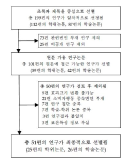




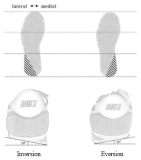
The purpose of the study was to investigate the effect of shoe's soles abrasion positions on gait biomechanics and joint moment of the lower limbs. Participants between the age of 20 and 29 (Male: 10, Female: 8) were chosen as subjects. These subjects wore shoes for 40 minutes with soles that were previously worn down medially or laterally. Motion analysis system consisting of 8 infrared cameras and two force platforms were used to measure the following: center of mass(COM), ground reaction force(GRF) and lower limb’s joint moment. Significant differences in the COM and GRF were observed between lateral & medial worn shoes and non-worn shoes. In addition, significant differences in ankle and knee movements were observed. The change in shoe soles is common however there is still a lack of information regarding the effects on gait patterns, joint forces, etc. This study reveals that shoes with worn down soles can negatively influence our gait pattern. We recommend that shoes be checked regularly for signs of wear and tear and changed accordingly. Furthermore, research focusing on the effects of differently shaped shoe sole abrasion is needed to recommend how they influence an abnormal gait. In addition, further studies on the relationship of worn shoes on lower back pain needs to be conducted.

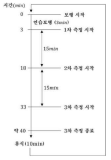

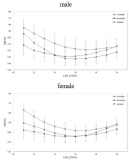
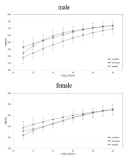
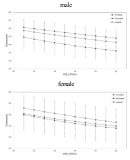
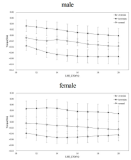

PURPOSE This study examined how consumers' visual attention to ads during eSports media consumption varies over time. METHODS An experimental study with a single factor, three-level within subject experimental design was conducted, utilizing an eye-tracker to measure visual attentions, including fixation count and duration. Seventy-eight students from a national university in city B participated in the experiment. A repeated measures ANOVA was conducted using the open-source statistical program R to test the research hypothesis. RESULTS Both the fixation count and duration were highest for the first ad and then gradually decreased for the second and third ad. CONCLUSIONS It is recommended that eSports sponsors should consider differentiating ad pricing based on the order of exposure, then expose the first ad presented more frequently and for extended periods, and consider different shapes, colors, and movements to prevent adaptation to the initial allocation of attention.

[Purpose] The purpose of this research is to empirically analyze the relationship between self-determination and relationship commitment, customer orientation, service quality, and relation continuity intention of fitness center customers through structural equation model analysis. [Methods] For this purpose, this study set 242 members at the five fitness centers located in Seoul as the research subjects. In an effort to verify the proposed structural model, this study used IBM SPSSWIN Ver. 21.0 and AMOS 18.0. [Results] As a result, first, autonomy had a positive effect on relationship commitment. Second, competence didn’t had a positive effect on relationship commitment. Third, relatedness had a positive effect on relationship commitment. Fourth, relationship commitment had a positive effect on customer orientation. Fifth, relationship commitment had a positive effect on service quality. Sixth, customer orientation had a positive effect on relation continuity intention. Seventh, service quality had a positive effect on relation continuity intention

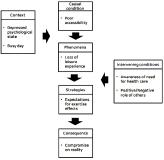
Purpose The purpose of this study is to investigate the alienation and the overcoming process of the physical activity participation of people with Adventitious Visual Impairment(AVI) Methods 21 Adults with AVI were recruited and one on one semi-structured interview was conducted. Ground theory was used to analyze the data. Member check, peer debriefing was conducted to enhance the trustworthiness of this study. Results As a result, a total of 203 concepts were derived. This consisted of 21 subcategories and the common themes of the subcategories were categorized into nine categories. Specific results are as follows. First, the physical activity of people with AVI was directly affected by the sports facilities, physical activity programs, and professional instructor. This causal condition resulted in the loss of leisure experience in the context of the busy daily life and the depressed psychological state. Second, due to the perceived need of health care and the positive involvement of others, people with AVI came to expect the effect of exercise. Third, people with AVI participated in physical activity again as a tool to achieve the purpose of health improvement. This type of physical activity has a limitation that it can not guarantee the continuity of physical activity due to the limitation that it does not contain autonomy and interest of people with AVI. Conclusions Based on these results, the following suggestions were made. First, it is necessary to improve the environment for ensuring participation in physical activity of people with AVI. Moreover education and promotion of the effects and values of the exercise should be carried out for people with AVI and their guardians. Second, it is necessary to diversify physical activity types and reconstruct existing exercise programs.
